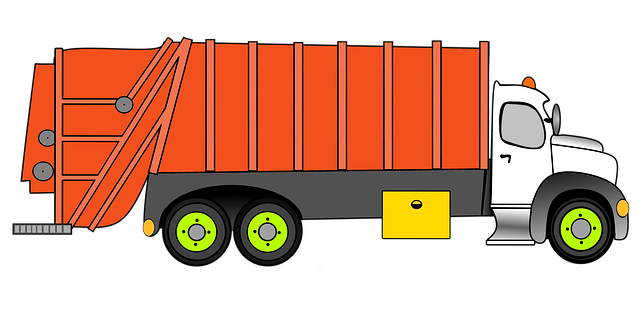Registering a car in California is a straightforward process, but understanding the requirements is key. This guide will walk you through the steps, from gathering essential documents to visiting your local DMV. You’ll need to verify the Vehicle Identification Number (VIN) accurately and pay registration fees. Using a trusted DMV VIN verifier ensures accuracy and saves time. Follow these steps to ensure a smooth car registration experience in California.
- Understand California Car Registration Requirements
- Gather Necessary Documents for Car Registration
- Visit Your Local DMV and Complete Application
- Verify Vehicle Identification Number (VIN) Accurately
- Pay Registration Fees and Receive Your License Plate
Understand California Car Registration Requirements

Before registering your car in California, it’s essential to understand the state’s specific requirements. The California Department of Motor Vehicles (DMV) mandates that all vehicles operated within the state be properly registered and have an up-to-date safety inspection. This process involves verifying the vehicle identification number (VIN) to ensure the car’s authenticity and history.
A key component in this verification process is utilizing a trusted VIN verifier, like those offered by the DMV or third-party services. These tools help establish the car’s make, model, year, and check for any reported accidents or outstanding issues. Additionally, some services even provide mobile VIN inspection options, allowing for increased convenience when preparing your car for registration.
Gather Necessary Documents for Car Registration

Before heading to the California Department of Motor Vehicles (DMV) to register your car, make sure you have all the required documents ready. This process is essential to ensure a smooth and efficient registration experience. The key documents include your vehicle’s registration certificate from the previous state, a valid driver’s license, proof of insurance, and perhaps most importantly, the Vehicle Identification Number (VIN) verifier report. You can obtain this report through various means, including a mobile VIN verification service, which offers a convenient and often faster alternative to traditional methods.
Additionally, you’ll need to present proof of ownership, such as a title or bill of sale, and any applicable fees for registration and vehicle taxes. Utilizing a mobile VIN inspection tool can help expedite the gathering of these documents by providing quick access to important vehicle details, ensuring accuracy and saving time when visiting the DMV.
Visit Your Local DMV and Complete Application

To begin the registration process for your car in California, start by visiting your local Department of Motor Vehicles (DMV) office. This is where you’ll complete the necessary paperwork and initiate the official registration procedure. Bring along all required documents, including proof of ownership, vehicle identification number (VIN), and any other pertinent information. The DMV staff will guide you through the process and ensure that your car meets all legal standards.
One crucial step during this visit is to have a valid VIN verifier or use a mobile vin verification service to confirm the authenticity of your vehicle’s VIN. This ensures a seamless registration experience, as California requires accurate and up-to-date information for all registered vehicles. Many DMV offices now offer online services, allowing you to complete certain forms beforehand, saving time during your visit.
Verify Vehicle Identification Number (VIN) Accurately

When preparing to register your car in California, one of the crucial steps is ensuring your Vehicle Identification Number (VIN) is accurate. This unique 17-character code is essential for identifying your vehicle and verifying its authenticity. Many individuals opt for a mobile vin inspection or use mobile vin verifiers to cross-check this information before proceeding with registration. These tools provide a convenient and efficient way to confirm the VIN’s accuracy, ensuring a smooth car registration process at the California Department of Motor Vehicles (DMV).
Accurate VIN documentation is vital as it protects you from potential issues in the future. A correct VIN ensures your vehicle’s history can be traced, which is crucial for insurance claims, ownership transfers, and even preventing fraud. Therefore, take the time to verify this critical detail using reputable mobile vin verification services or tools to avoid any complications during the registration process.
Pay Registration Fees and Receive Your License Plate

After submitting your registration application and documents, it’s time to pay the required fees for vehicle registration in California through the DMV’s website or a designated payment center. The cost varies depending on your vehicle type and other factors. Once processed, you’ll receive your new license plate by mail, typically within a few weeks. Alternatively, if you need faster service, consider using a mobile vin inspection service that can provide instant results and even deliver your plates to you.
Before taking your car off the road, ensure that both the registration and license plate are in place. The DMV’s VIN verifier tool allows you to quickly validate your vehicle’s information, including its history and any outstanding issues, making it a crucial step in the registration process. This verification adds an extra layer of security and ensures that your vehicle is safe to register.
Registering a car in California is a straightforward process, ensuring your vehicle is roadworthy and legally operated. By understanding the requirements, gathering essential documents, and visiting your local DMV, you can efficiently complete the registration. A key step is accurately verifying the Vehicle Identification Number (VIN) using reliable tools like a dmv VIN verifier to confirm the vehicle’s authenticity. Once approved, pay the necessary fees and receive your license plate, marking the successful conclusion of your car registration journey in California.
